Occupation Socialite, composer | Name Alma Mahler Role Socialite | |
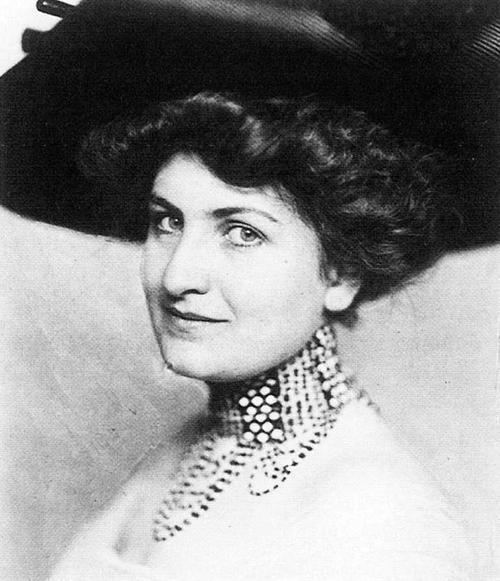 | ||
Full Name Alma Maria Schindler Books Gustav Mahler, Diaries, 1898-1902 Children Anna Mahler, Manon Gropius, Maria Mahler Parents Anna von Bergen, Emil Jakob Schindler Similar People | ||
Nationality Austrian and American | ||
Great Composers: Alma Mahler
Alma Mahler - History channel
Alma Maria Mahler Gropius Werfel (born Alma Margaretha Maria Schindler; 31 August 1879 – 11 December 1964) was a Viennese-born composer. author, editor and socialite. She became the wife, successively, of composer Gustav Mahler, architect Walter Gropius, and novelist Franz Werfel, as well as the consort of several other prominent men, notably painter Oskar Kokoschka. Musically active from her early years, she was the composer of at least seventeen songs for voice and piano. In later years her salon became part of the artistic scene, first in Vienna, then in Los Angeles and in New York.
Contents
- Great Composers Alma Mahler
- Alma Mahler History channel
- Childhood years
- Romantic career
- Marriage to Mahler
- Marriage to Gropius
- Marriage to Werfel
- Cultural icon in the US
- Death
- Posthumous reputation
- Composer
- Works
- References
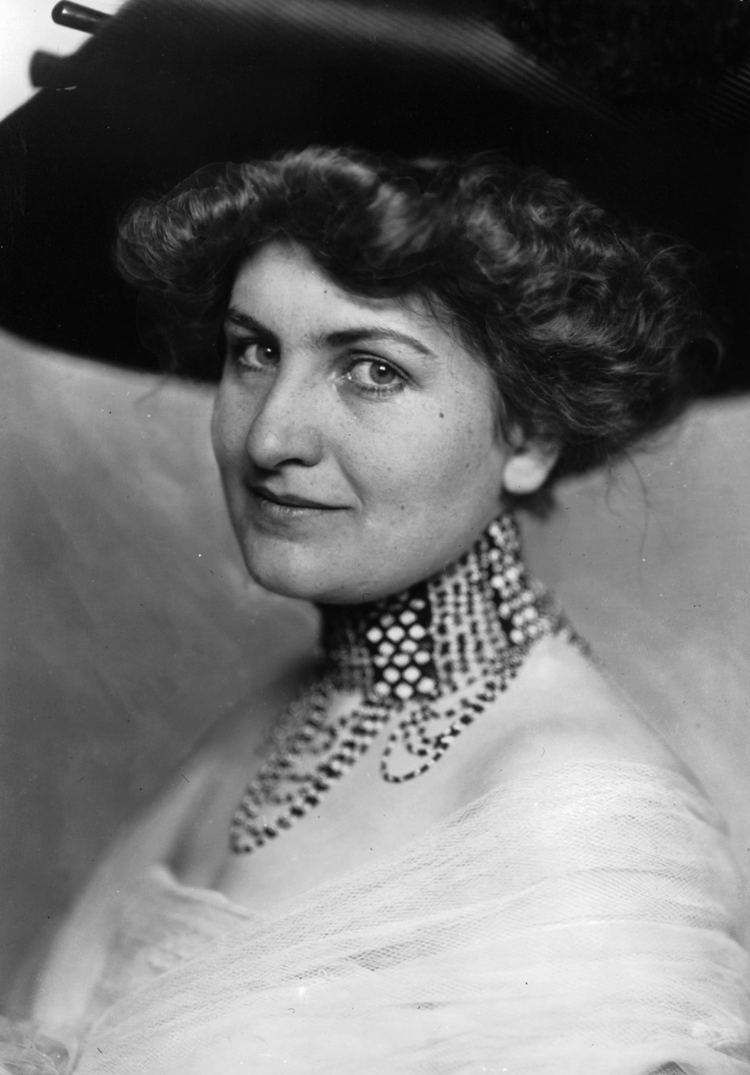
Childhood years
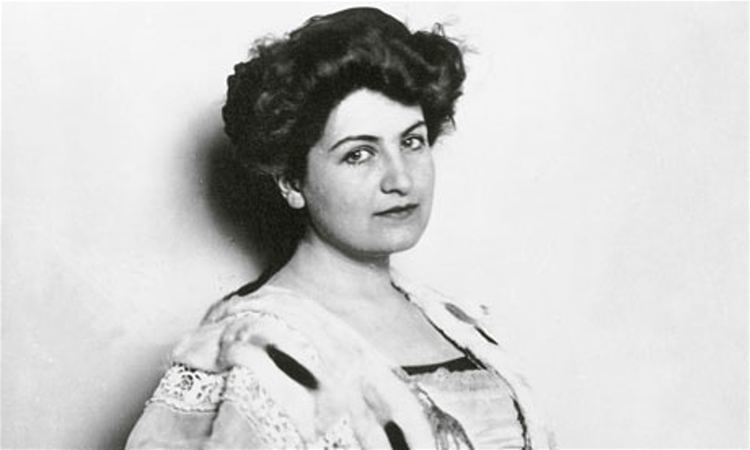
Alma Maria Schindler was born on 31 August 1879 in Vienna, Austria (then Austria-Hungary), to the landscape painter Emil Jakob Schindler and his wife Anna Sofie (née Bergen, 1857–1938).
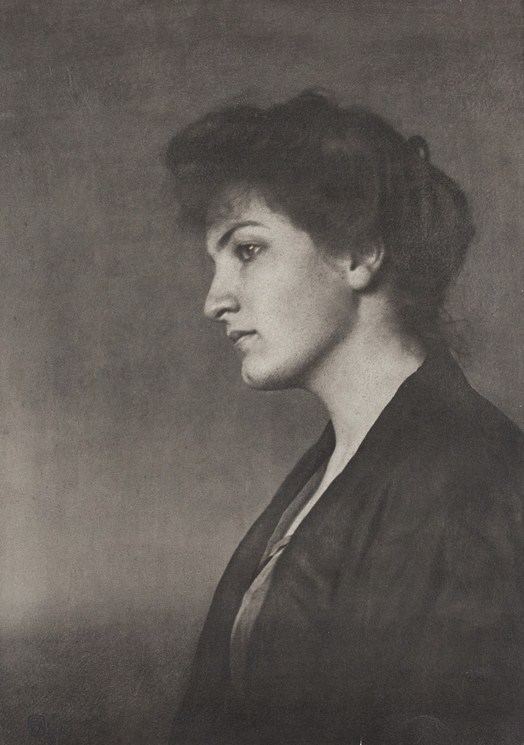
Anna Sofie Schindler's parents were both Dutch immigrants, whether first or second generation is not known. Her father, Claus Jacob Ary Bergen (1817-1891), original name Bergk, came from the town of Bergen op Zoom in North Brabant (cf. Wiener Fremden-Blatt, 28 December 1878, p. 6). Nothing is known about the life of her mother, Metta Margaretha Charlotte Roggenkamp (1826-1902). The parents were married on 31 December 1853 in Hamburg, and between 1854 and 1869 Margaretha Bergen gave birth to at least nine children (3 boys and 6 girls) of which Anna Sofie was the second oldest (acc. to incomplete records kept in the Hamburg State Archives). How Ary Bergen earned his living is uncertain, but in 1867 he is recorded as an innkeeper, and c. 1869 he became owner of a beer brewery (cf. the Hamburg Adressbücher, 1867-1879). However, he went bankrupt in the aftermath of the Franco-Prussian War 1870-71 (cf. Alma Mahler-Werfel, Tagebuch-Suiten 1898-1902, Frankfurt 1997, p. 534).

In her unpublished memoirs Der schimmernde Weg (1930, p. 427), Alma Mahler describes her mother as "Eine gesunde, kernige norddeutsche Mutter, die damals wahrscheinlich hübsch war, dies erkannte ich aus ihrer Wirkung auf Männer - mir gefiel sie rein exterieuristisch [äußerlich] nicht, weil mir ihr Gesicht ungeistig erschien." ["A healthy and robust North German mother, who at that time was probably pretty - this I recognized from the effect she had on men - but I took a dislike of her outward appearance because her face did not appear to be an intellectual one."] It was however precisely these qualities that Emil Schindler is said to have admired and appreciated with his wife.
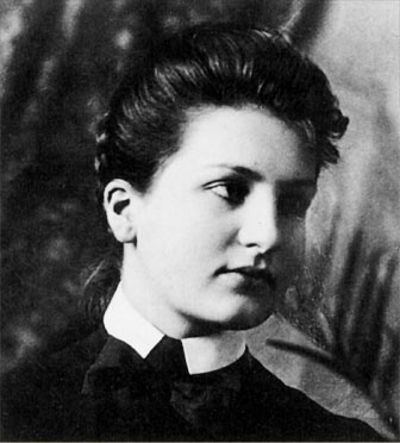
One and a half months after Alma's birth Schindler confided to his diary: "mein Kind ist prächtig ausgestattet, mein Heim sieht nach und nach ganz nett aus, meine Verhältnisse sind momentan besser geworden, der Hausstand solider (…) Ein Weib wie das meine finde ich nicht mehr." ["My child is splendidly equipped, my home is little by little looking very nice, for the present my conditions have improved, and my household become more solid (...). A wife like mine I shall never find again."] (Vienna, 15 October 1879. Citations from Carl Moll's Emil Jakob Schindler. Vienna 1930, pp. 24-26).
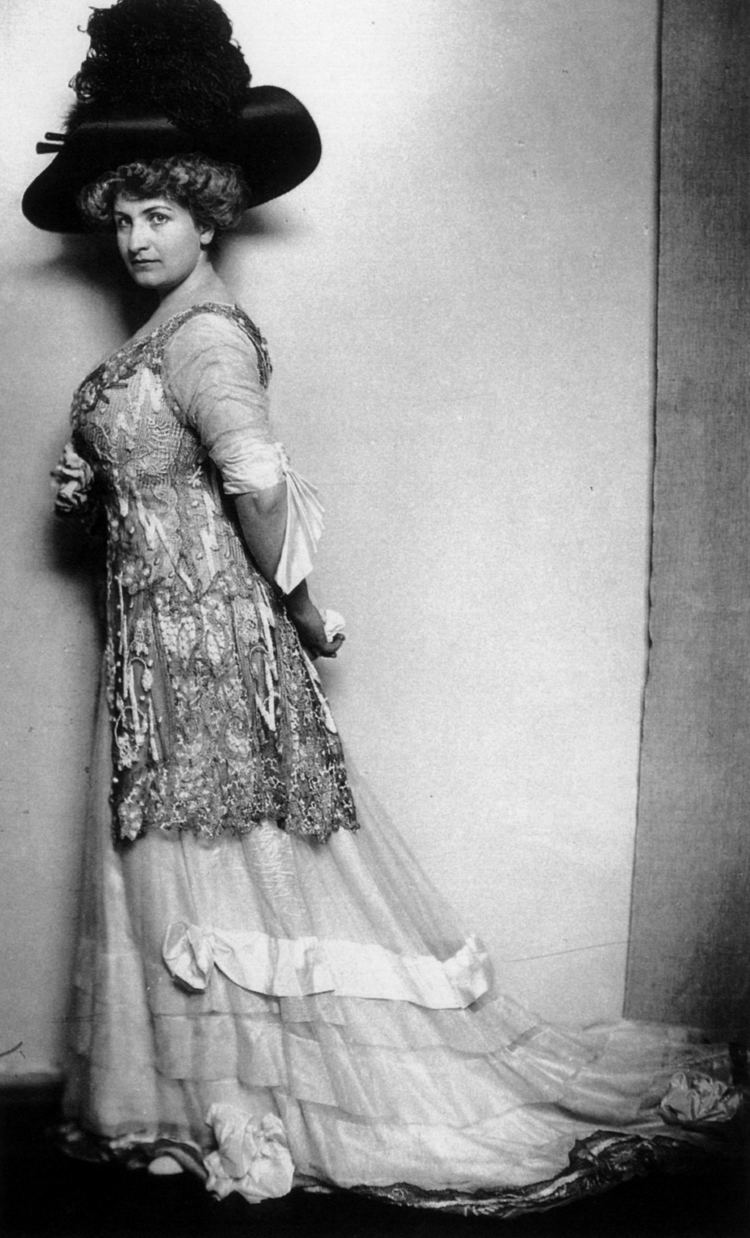
By late January 1880 it became clear that Anna Schindler was pregnant again, and on 16 August that year she gave birth to a second daughter who was christened Margaretha [Grethe] Julie (like Alma also named after their maternal grandmother, and Julie after her paternal aunt). The circumstances regarding the conception of Grethe in the late fall of 1879, have been much discussed, owing solely to her elder sister who, in her unpublished memoirs from 1930, claims that Grethe's biological father was not Schindler but his friend and colleague, the painter Julius Viktor Berger (1850-1902). Mahler's "obituary note" on her sick sister, then 45-years-old, who for a number of years had suffered from schizophrenia, in those days diagnosed as premature dementia, reads as follows:
"Mit dieser unsinnigen Schwester verband mich nichts als Mitleid, manchmal sogar ungeduldiger Hass. Ich wusste damals [1925] noch nicht, dass sie nicht das Kind meines Vaters war, aber ich sah, wie er sie hasste und mich liebte, und so hasste ich sie nun auch und liebte ihn." ["Nothing but pity attached me to this insane sister, occasionally even with impatient hate. At that time I didn't yet know that she wasn't my father's child, but I noticed how he hated her and loved me, and therefore I also hated her and loved him".]
It is an unsolved mystery that the Schindler couple after 1880 did not have any more children. After all they lived together for another twelve years, and Anna Schindler was only 23 years old at the birth of her second child. In her unpublished memoirs (Der schimmernde Weg, 1930) Alma Mahler hints that her father suffered from syphilis and that was the cause of sister Grethe's later diagnosed disease Dementia praecox (which from a medical point of view is sheer nonsense). During the months following Alma's birth it is known from Schindler's diary that he was refused admission to the bed of his wife, and in sheer despair he might have visited a brothel and had contracted syphilis. Although later in life Mahler characterized her upbringing as privileged, many biographies recount that the family to have been only moderately successful. After her father's death (1892), her mother married her late husband's former pupil, Carl Moll, who was a co-founder of the Vienna Secession. Alma Schindler and her sister Grethe began taking piano lessons at an early age from Miss Adele Mandlick (later married Radnitzky, 1864-1932). Both girls, respectively nine and eight years old, appeared in public for the first time on 10 April 1890 at a student's concert in Vienna, and eventually trained under Zemlinsky. Her father died when she was 13 years old.
Romantic career
Alma's social interactions in her youth included friendships with the artists of the Vienna Secession, among them Gustav Klimt. As a young woman she had a series of flirtations, including Gustav Klimt, theater director Max Burckhard and composer Alexander von Zemlinsky.
Marriage to Mahler
On 9 March 1902 she married Gustav Mahler, who was nineteen years her senior and the director of the Vienna Court Opera. With him she had two daughters, Maria Anna (1902–1907), who died of scarlet fever or diphtheria, and Anna (1904–1988), who became a sculptor. The terms of Alma's marriage with Gustav were that she would abandon her own interest in composing. Artistically stifled herself, she embraced her role as a loving wife and supporter of Gustav's music, together regularly attending the salon of Adele Bloch-Bauer (Portrait of Adele Bloch-Bauer I).
Later in their marriage, after becoming severely depressed in the wake of Maria's death, she began an affair with the young architect Walter Gropius (later head of the Bauhaus), whom she met during a rest at a spa. On seeking advice from Sigmund Freud, who cited Mahler's curtailing of Alma's musical career as a major marital obstacle, and following the emotional crisis in their marriage after Gustav's discovery of the affair, Gustav began to take a serious interest in Alma's musical compositions, regretting his earlier dismissive attitude and taking promotional actions, including editing and re-orchestrating some (Die stille Stadt, In meines Vaters Garten, Laue Sommernacht, Bei dir ist es traut, Ich wandle unter Blumen) of her works. Upon his urging, and under his guidance, she prepared five of her songs for publication (they were issued in 1910, by Gustav's own publisher, Universal Edition). After this turbulent period in their marriage, Alma and Gustav travelled to New York, where Gustav was seasonally engaged as a conductor. In February, 1911, he fell severely ill with an infection related to a heart defect that had been diagnosed several years earlier. He died on May 18th, shortly after their return to Vienna.
Marriage to Gropius
After Mahler's death, she did not immediately resume contact with Gropius. Between 1912 and 1914 she had a tumultuous affair with the artist Oskar Kokoschka, who created works inspired by his relationship with her, including his painting The Bride of the Wind. Kokoschka's possessiveness wore on Alma, and the emotional vicissitudes of the relationship tired them both.
With the coming of World War I, Kokoschka enlisted in the Austro-Hungarian Army, and she subsequently distanced herself from him and resumed contact with Gropius, who was also serving in combat at that time. She and Gropius married in 1915 during one of his military leaves. They had a daughter together, Manon Gropius (1916–1935), who grew up being friends with Maria Altmann. After Manon died of polio at the age of 18, composer Alban Berg wrote his Violin Concerto in memory of her.
She became pregnant and gave birth to a son, Martin Carl Johannes Gropius (1918–1919). Gropius at first believed that the child was his, but Alma's ongoing affair with Werfel was common knowledge in Vienna by this time, and she was soon exposed (see below).
Within a year, they agreed to a divorce. In the meantime, Martin, who had been born prematurely, developed hydrocephalus and died at the age of ten months. Her divorce from Gropius became final in 1920.
Marriage to Werfel
While Gropius's military duties were still keeping him absent, she met and began an affair with Prague-born poet and writer Franz Werfel in the fall of 1917. She and Werfel began openly living together from that point on. However, she postponed marrying Werfel until 1929, after which she took the name "Alma Mahler-Werfel".
In 1938, following the Anschluss, Alma and Werfel, who was Jewish, were forced to flee Austria for France; they maintained a household in Sanary-sur-Mer, on the French Riviera, from summer 1938 until spring 1940. With the German invasion and occupation of France during World War II, and the deportation of Jews and political adversaries to Nazi concentration camps, the couple were no longer safe in France and frantically sought to secure their emigration to the United States. In Marseille, they were contacted by Varian Fry, an American journalist and emissary of the Emergency Rescue Committee, a private American relief organization that came to the aid of refugee intellectuals and artists at that time.
As exit visas could not be obtained, Fry arranged for the Werfels to journey on foot across the Pyrenees into Spain, to evade the Vichy French border officials. From Spain, Alma and Franz travelled on to Portugal and then boarded a ship for New York City. Eventually they settled in Los Angeles, where Werfel, who had already enjoyed moderate renown in the U.S. as an author, achieved popular success with his novel The Song of Bernadette, which was made into a film in 1943, and the science fiction novel, Star of the Unborn, published after his death. Werfel, who had experienced serious heart problems throughout their exile, died of a heart attack in California in 1945.
Cultural icon in the US
In 1946 Mahler-Werfel became a U.S. citizen. Several years later she moved to New York City, where she remained a cultural figure. Leonard Bernstein, who was a champion of Gustav Mahler's music, stated in his Charles Eliot Norton lectures of 1973 that Alma had attended some of his rehearsals. Bernstein considered her to be a "living" link to both Mahler and Alban Berg.
Death
Alma Mahler Werfel died 11 December 1964 in New York City. She is buried in the Grinzing section of Vienna, in the same cemetery as her daughter Manon Gropius and her first husband Gustav Mahler.
Posthumous reputation
Shortly after her death, noted satirist Tom Lehrer wrote a song called "Alma" which centred on her role as wife and muse to three prominent artists. Like many Lehrer songs, it is irreverent in tone, portraying her as a difficult, temperamental companion to the three work-absorbed artists. A portion of the song goes, "Alma, tell us! All modern women are jealous. Which of your magical wands got you Gustav and Walter and Franz?"
In the 1974 film Mahler, by director Ken Russell, Gustav Mahler, while on his last train journey, remembers the important events of his life, such as his relationship with his wife, the deaths of his brother and young daughter, and his trouble with the muses. In the film, Alma was played by Georgina Hale, and Gustav was by Robert Powell. In 1996, Israeli writer Joshua Sobol and Austrian director Paulus Manker created the polydrama Alma. It played in Vienna for six successive seasons, and toured with over 400 performances to Venice, Lisbon, Los Angeles, Petronell, Berlin, Semmering, Jerusalem and Prague—all places where Mahler-Werfel had lived. The show was made into a three-part TV miniseries in 1997.
Mohammed Fairouz set the words of Alma Mahler in his song cycle Jeder Mensch. It premiered in a coupling with songs of Alma Mahler by mezzo-soprano Kate Lindsey in 2011.
A treatment of Mahler-Werfel's life was presented in the 2001 Bruce Beresford film Bride of the Wind, in which Alma was played by Australian actress Sarah Wynter. Gustav Mahler was portrayed by British actor Jonathan Pryce. Swiss actor Vincent Pérez portrayed Oskar Kokoschka.
Martin Chervin wrote a one-woman play about her first marriage called Myself, Alma Mahler. In 1998 extracts from Alma's diaries were published, covering the years from 1898 to 1902, up until the time she married Mahler. In the 2001 novel The Artist's Wife by Max Phillips, she tells her own story from the afterlife, focusing on her complicated relationships.
In 2010 the German filmmaker Percy Adlon and his son Felix Adlon released their film Mahler auf der Couch (Mahler on the Couch), which relates Gustav Mahler's tormented relationship with his wife Alma and his meeting with Sigmund Freud in 1910. In the film's introduction, the directors stated, "That it happened is fact. How it happened is fiction."
Her two books on Mahler influenced Mahler studies. As an articulate, well-connected, and influential woman who outlived her first husband by more than 50 years, Mahler-Werfel was for decades treated as the main authority on the mature Mahler's values, character, and day-to-day behaviour, and her various publications quickly became the central source material for Mahler scholars and music-lovers alike. As scholars investigated the picture she had painted of Mahler and her relationship with him, her accounts have increasingly been revealed as unreliable, false, and misleading. Nevertheless, the deliberate distortions have had a significant influence upon several generations of scholars, interpreters, and music-lovers. Citing the serious contradictions between Alma's accounts and other evidence, including her own diaries, several historians and biographers have begun to speak of the "Alma Problem." According to Hugh Wood, "Often she is the only witness, and the biographer has to depend on her while doubting with every sentence her capacity for telling the truth. Everything that passed through her hands must be regarded as tainted."
Composer
Alma played the piano from childhood and in her memoirs reports that she first attempted composing at age nine. She studied composition with Josef Labor beginning in 1895. She met Alexander von Zemlinsky in early 1900, began composition lessons with him that fall, and continued as his student until her engagement with Gustav Mahler (December 1901), after which she ceased composing. Up until that time, she had composed or sketched Lieder, and worked on instrumental pieces and a segment of an opera. She may have resumed composing after 1910, at least sporadically, but the chronology of her songs is difficult to establish because she did not date her manuscripts.
Only a total of 17 songs by her survive. Fourteen were published during her lifetime, in three publications dated 1910, 1915, and 1924; it is unclear whether she continued composing at all after her last publication. The first two volumes appeared under the name Alma Maria Schindler-Mahler, and the last volume was published as "Fünf Gesänge" by Alma Maria Mahler; the cover of the 1915 set was illustrated by Oskar Kokoschka. Three additional songs were discovered in manuscript posthumously; two of them were published in the year 2000, edited by Dr. Susan M. Filler, and one remains unpublished. Her personal papers, including music manuscripts, are held at the University of Pennsylvania, and at the Austrian National Library in Vienna, and at the Bavarian State Library in Munich.
These songs have been regularly performed and recorded since 1980 (at present 30 records are available). Orchestral versions of the accompaniments have been produced, 7 songs by David and Colin Matthews (published by Universal Edition), and all 17 songs by Julian Reynolds, and by Jorma Panula, both are unpublished.
Works
Note: The original poem is entitled "Französisches Wiegenlied"' or "Volkslied", and was composed between May and August 1899.
Note: The original title of the poem is Gefunden.
